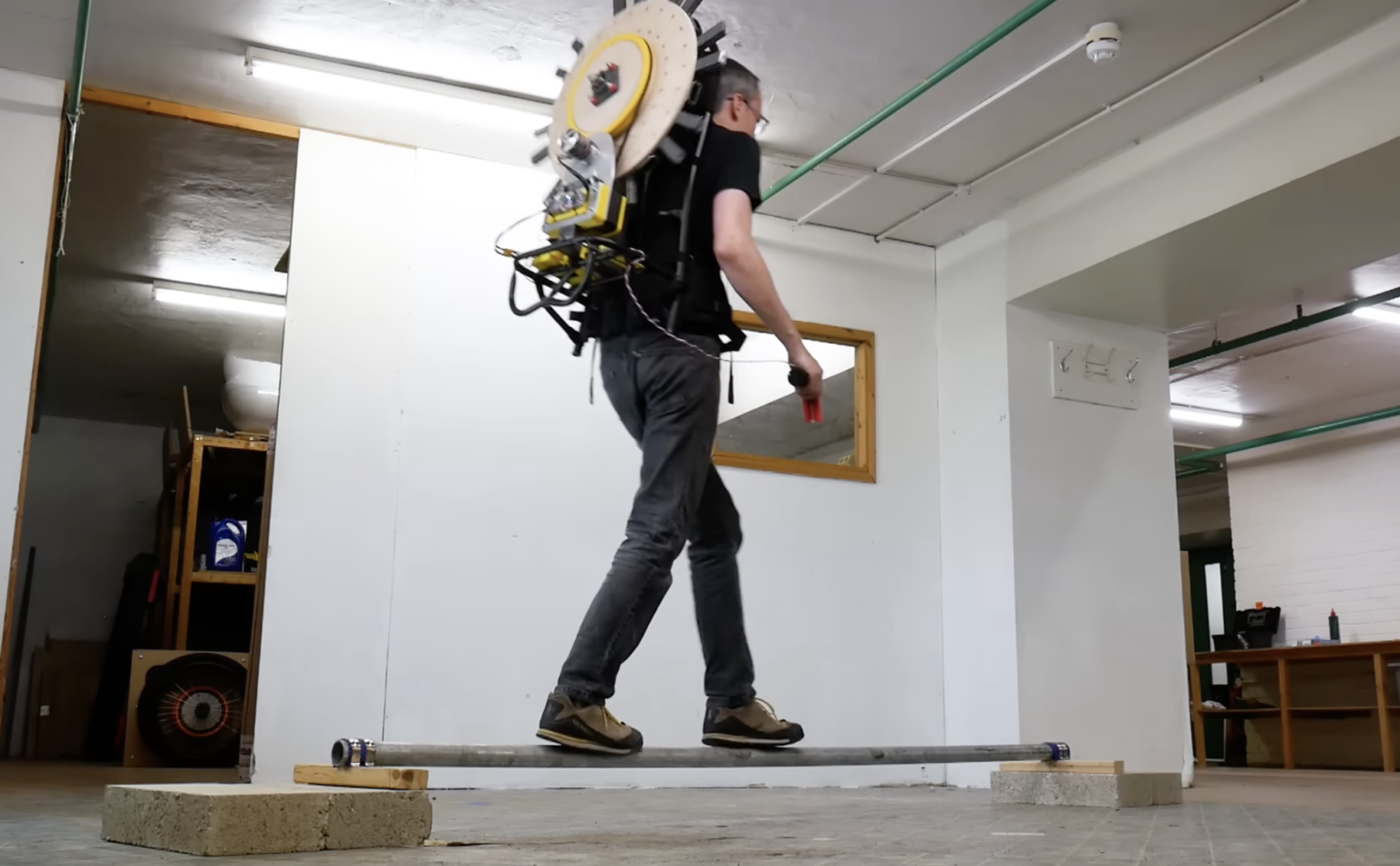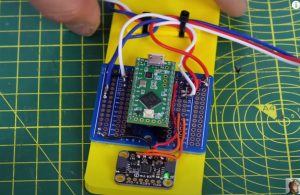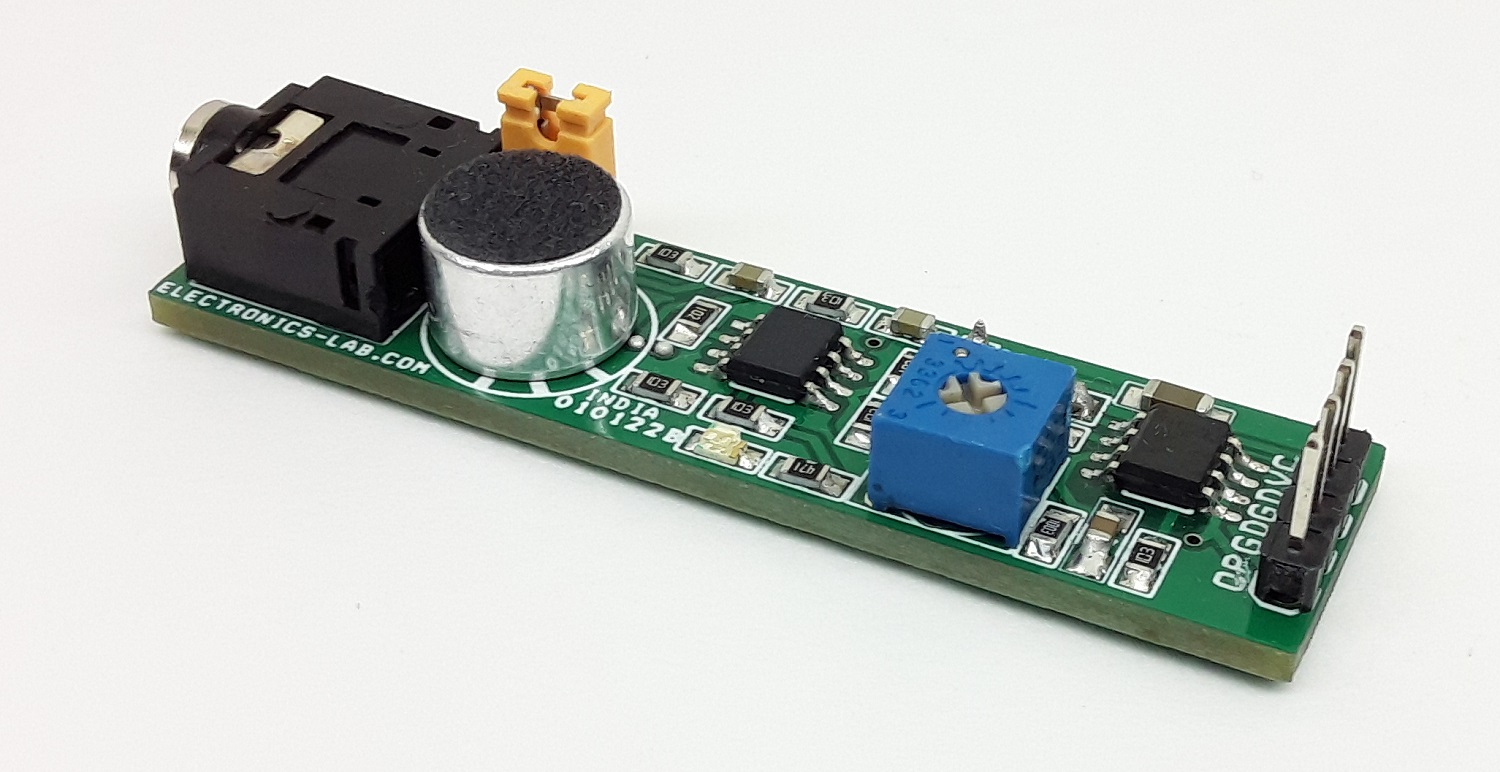
This inventor, James Bruton, had already created a couple of reaction wheels that help a device balance on the spot, and he thought this might be the avenue to explore. Or the scaffolding pole to traverse, as it were. It makes for a great watch.
He writes on YouTube:
“This is a wheel which rotates and dynamically accelerates in either direction based on the angle of the device. Force equals mass times acceleration, so we only get a reaction force when the wheel is accelerating or changing direction. But how big would a reaction wheel need to be to help me balance so I can walk all the way down the beam?”
The answer is big, or at least, heavier and heavier (30Kg in the end).
Basically, a steel frame, with 3D-printed brackets that attach on to a frame rucksack, along with the main reaction wheel itself (with extra, and extra, added steel bars for weight) and bearings and 3D printed pulleys to move the wheel…
 Not forgetting the Arduino-compatible 32-bit Teensy-LC (Low Cost) devboard and the MPU-6050 inertial measurement unit (right) at the heart of the system.
Not forgetting the Arduino-compatible 32-bit Teensy-LC (Low Cost) devboard and the MPU-6050 inertial measurement unit (right) at the heart of the system.
And so, did the device help him to navigate the tightrope successfully? It did!
Check out the video below, and you can read more on the Arduino blog, too, which highlighted this project.
The CAD and code for James’s projects can be found on Github.
See also: Enter the self-balancing Mega Hub Motor Electric Unicycle!







